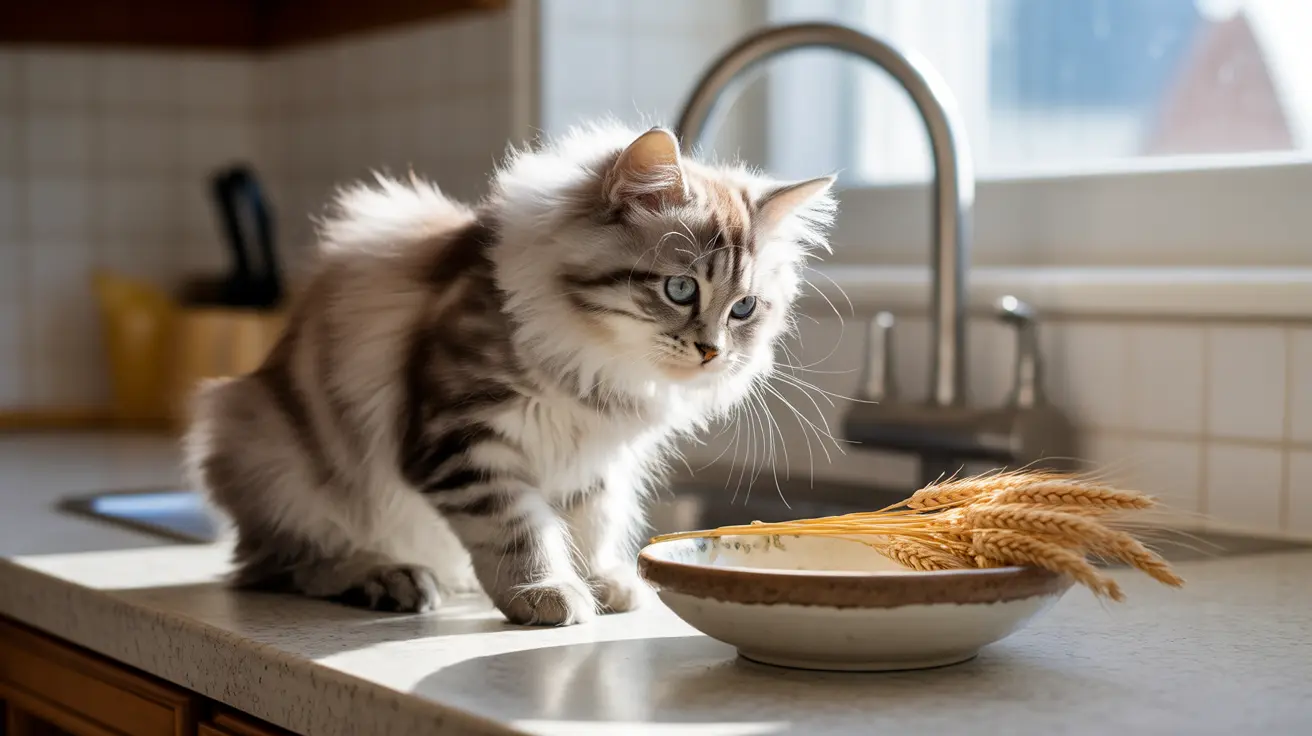As a cat owner, you've probably noticed wheat listed in many commercial cat food ingredients. But given that cats are obligate carnivores, you might wonder: can cats eat wheat safely? Let's explore the science behind cats and wheat consumption, potential risks and benefits, and what you need to know to make informed decisions about your feline friend's diet.
Understanding the relationship between cats and wheat is crucial for maintaining optimal feline health. While wheat isn't toxic to cats, its role in their diet is complex and requires careful consideration.
The Natural Feline Diet: Why Wheat Isn't a Priority
Cats evolved as strict carnivores, with digestive systems specifically designed to process animal proteins and fats. Unlike omnivores, cats lack certain enzymes necessary to efficiently break down and utilize complex carbohydrates like wheat. Their natural diet in the wild contains virtually no grains, which reflects their biological needs.
Wheat in Commercial Cat Foods: Understanding the Reality
Despite cats' carnivorous nature, wheat appears frequently in commercial cat foods as a binding agent and filler. While this practice is common, it's important to understand that wheat serves more of a functional purpose in manufacturing than a nutritional one for your cat.
Potential Benefits of Limited Wheat Consumption
While wheat isn't essential for cats, it can provide some minimal benefits when consumed in small amounts:
- Dietary fiber for digestive health
- Some B vitamins and minerals
- Cost-effective ingredient in commercial foods
Risks and Health Concerns Associated with Wheat
Feeding wheat to cats can come with several potential risks:
Digestive Issues
Many cats experience gastrointestinal problems when consuming wheat, including:
- Vomiting
- Diarrhea
- Stomach discomfort
- Gas and bloating
Allergic Reactions
Some cats develop allergies to wheat proteins, showing symptoms such as:
- Skin irritation and itching
- Ear infections
- Excessive grooming
- Gastrointestinal upset
Making Informed Decisions About Wheat in Your Cat's Diet
When considering wheat in your cat's diet, follow these guidelines:
- Read pet food labels carefully
- Introduce new foods gradually
- Monitor your cat for adverse reactions
- Consult with your veterinarian about appropriate diet choices
Alternative Diet Options
If you're concerned about wheat in your cat's diet, consider these alternatives:
- Grain-free commercial cat foods
- Raw or fresh food diets (under veterinary guidance)
- Limited-ingredient diets for sensitive cats
Frequently Asked Questions
Can cats safely eat wheat or foods containing wheat like bread or crackers?
While cats can technically eat small amounts of wheat-containing foods, it's not recommended as a regular part of their diet. Cats lack the necessary enzymes to properly digest wheat, and it provides little nutritional value for them.
What are the signs that my cat might be allergic or sensitive to wheat?
Common signs include itching, excessive grooming, skin rashes, ear infections, vomiting, and diarrhea. If you notice these symptoms, consult your veterinarian for proper diagnosis and treatment.
Why is wheat not an ideal ingredient in a cat's diet despite being common in commercial cat foods?
Cats are obligate carnivores, meaning they require primarily animal-based proteins for optimal health. While wheat is often used in commercial foods as a binding agent, it's not biologically appropriate or necessary for feline nutrition.
How can I tell if my cat has a wheat allergy, and what steps should I take if I suspect one?
If you suspect a wheat allergy, work with your veterinarian to conduct an elimination diet trial. This involves feeding a specialized diet without wheat for 8-12 weeks while monitoring symptoms. If symptoms improve and return when wheat is reintroduced, it may indicate an allergy.
Are there any benefits to feeding my cat wheat, or should I avoid it altogether?
While wheat provides some fiber and B vitamins, these nutrients can be obtained from more appropriate sources in a cat's diet. Unless your cat has specific dietary requirements prescribed by a veterinarian, there's no nutritional need to include wheat in their diet.
Conclusion
While cats can consume wheat in small amounts, it's not an essential part of their diet. Focus on providing high-quality, meat-based protein sources that better align with your cat's natural nutritional needs. Always consult with your veterinarian about the best dietary choices for your specific cat's health requirements.






